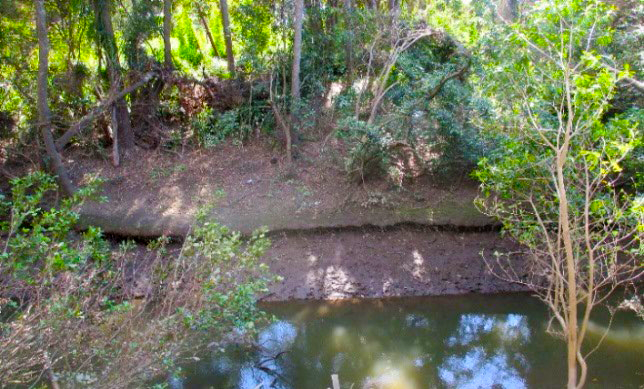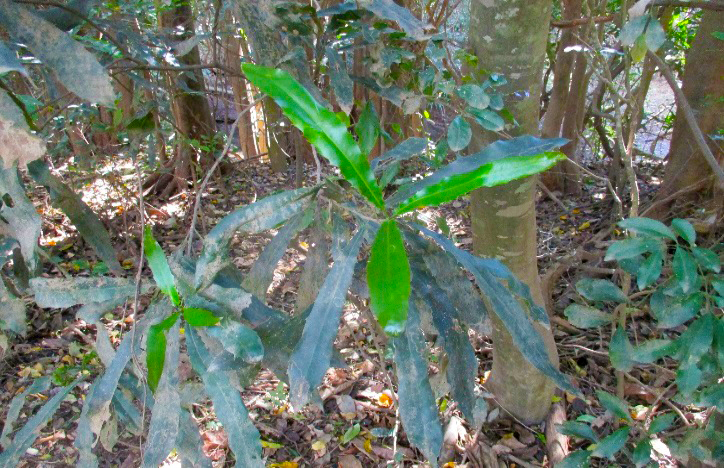The Belivah Creek catchment is an ecologically significant area, linking lowland sub-tropical rainforest at Bannockburn and Belivah to rainforest in the surrounding hills.
In 2017, we prepared a draft restoration plan to restore Belivah Creek.
The Belivah Creek catchment is of high value to our environment, economy and community. Yet, it is subject to threats.
Restoring the catchment will:
- strengthen the connectivity of biodiversity corridors
- increase habitat and food sources for threatened plants and animals
- improve water quality flowing through the catchment and into the Albert River
- improve our knowledge of feral animal mitigation
- ensure we manage stormwater and pipelines along Belivah Creek to mitigate floods
- improve recreation facilities like walkways, nature play, kick-about spaces, picnic areas and canoe launch points.
Belivah Creek starts its journey at Bahrs Hill. It passes 3.5 kilometres through private property and the Council-owned Stubbin Reserve, Rosemount Reserve, Willmann Park and Alexander Watt Park, before joining the Albert River at Bannockburn.

Map of Belivah Creek and surrounding catchment area
Environmental value
The endangered lowland subtropical rainforest and woodlands that surround Belivah Creek provide essential habitat for a variety of threatened flora, fauna and ecological communities. These include
- Koala
- Glossy black cockatoo
- Powerful owl
- Plunket mallee
- Flinders plum
- Macadamia nut
- Angle-stemmed myrtle
- Small-leaved tamarind
- Forest milk-vine
- Long-leaved tuckeroo, and
- Bahrs scrub croton.
The ponds along Belivah Creek provide permanent water to animals like kangaroos and wallabies. They support freshwater animals like mud crabs, prawns, mullet and bull sharks and play an important role in the food chain.
Scientists have identified Belivah, Bannockburn and surrounding suburbs as being one of the few areas able to provide suitable habitat to a range of species by 2090.
Economic value
Agriculture, aquaculture, and commercial fishing industries depend on Belivah Creek. The creek maintains water quality by filtering overland waters that flow into the Albert River and Moreton Bay.
Community and social value
Large open spaces within the Belivah Creek catchment provide areas for recreation. There is also a canoe launch point in the catchment.
- Diminishing vegetation - Very little fringing or ‘riparian’ vegetation remains along some areas of Belivah Creek. This lack of forest has negative effects on our water quality and animal diversity.
- Weed creep - Native vines and exotic plants like lantana and para grass have taken hold, limiting the amount of forest that can grow back.
- Feral animals - Foxes and cats use Belivah Creek to hunt vulnerable joey wallabies, brush-tailed possums and bandicoots.
Our launch event to restore Belivah Creek took place on Sunday, 22 April 2018 (Earth Day) at Willmann Park, Belivah.
Community members helped to celebrate the day by planting over 1,600 trees.
Since the launch of the project we have:
- planted 56 native ornamental trees in Willman Park, Stubbin and Rosemont Reserves
- maintained the trees planted at the launch of the project
- identified three significant habitat trees within Stubbin Reserve
- created native gardens to enhance the health of these trees and the native wildlife occupying the tree hollows (February 2019)
- removed weeds and planted 2,300 plants to rehabilitate part of Alexander Watt Park, Old Mill Road (April 2019)
- continued with regular maintenance of Willmann Park
- completed planting and removed weeds in Alexander Watt Park, Richlands Drive (May 2019)
- removed weeds and put in over 6,000 plants at Alexander Watt Park, Richlands Drive (April 2020)
- planted 1470 native plants at the original community planting site in Willmann Park (October 2020)
- planted 1600+ grasses, shrubs and trees at the following sites (October 2020):
- first and second community planting areas in Willmann Park
- Richlands Drive site at Alexander Watt Park
- within the native gardens in Stubbin Reserve
We support local groups who want to adopt a site for ongoing care and monitoring.
To find out how you can get involved or to register your interest to help with the project please email environment@logan.qld.gov.au.

Catchment area
Aerial view of the Belivah Creek Catchment area, facing south-east.

Stabilise creek banks
We are working to stabilise the banks along Belivah Creek.

Restore vegetation
Help us plant vegetation in the Belivah Creek catchment.

Protect habitat
Help us protect habitat for vulnerable species like Macadamia integrifolia.